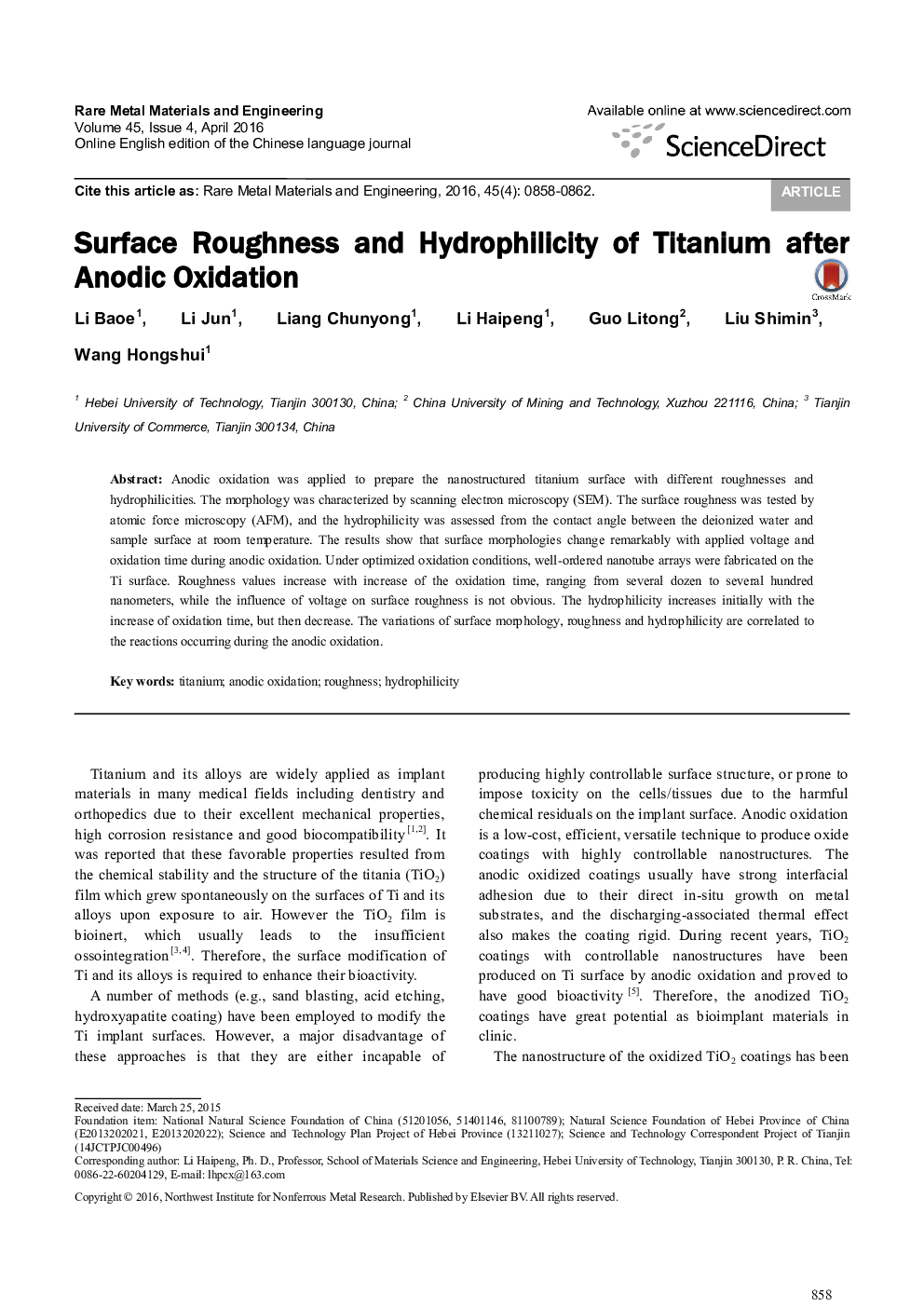| Article ID | Journal | Published Year | Pages | File Type |
|---|---|---|---|---|
| 814554 | Rare Metal Materials and Engineering | 2016 | 5 Pages |
Anodic oxidation was applied to prepare the nanostructured titanium surface with different roughnesses and hydrophilicities. The morphology was characterized by scanning electron microscopy (SEM). The surface roughness was tested by atomic force microscopy (AFM), and the hydrophilicity was assessed from the contact angle between the deionized water and sample surface at room temperature. The results show that surface morphologies change remarkably with applied voltage and oxidation time during anodic oxidation. Under optimized oxidation conditions, well-ordered nanotube arrays were fabricated on the Ti surface. Roughness values increase with increase of the oxidation time, ranging from several dozen to several hundred nanometers, while the influence of voltage on surface roughness is not obvious. The hydrophilicity increases initially with the increase of oxidation time, but then decrease. The variations of surface morphology, roughness and hydrophilicity are correlated to the reactions occurring during the anodic oxidation.
